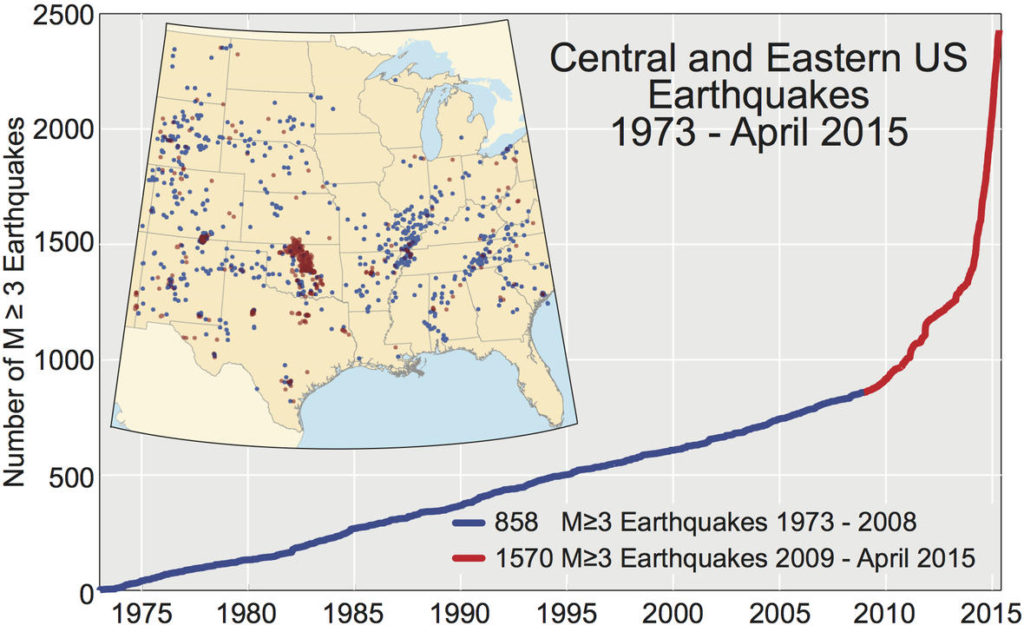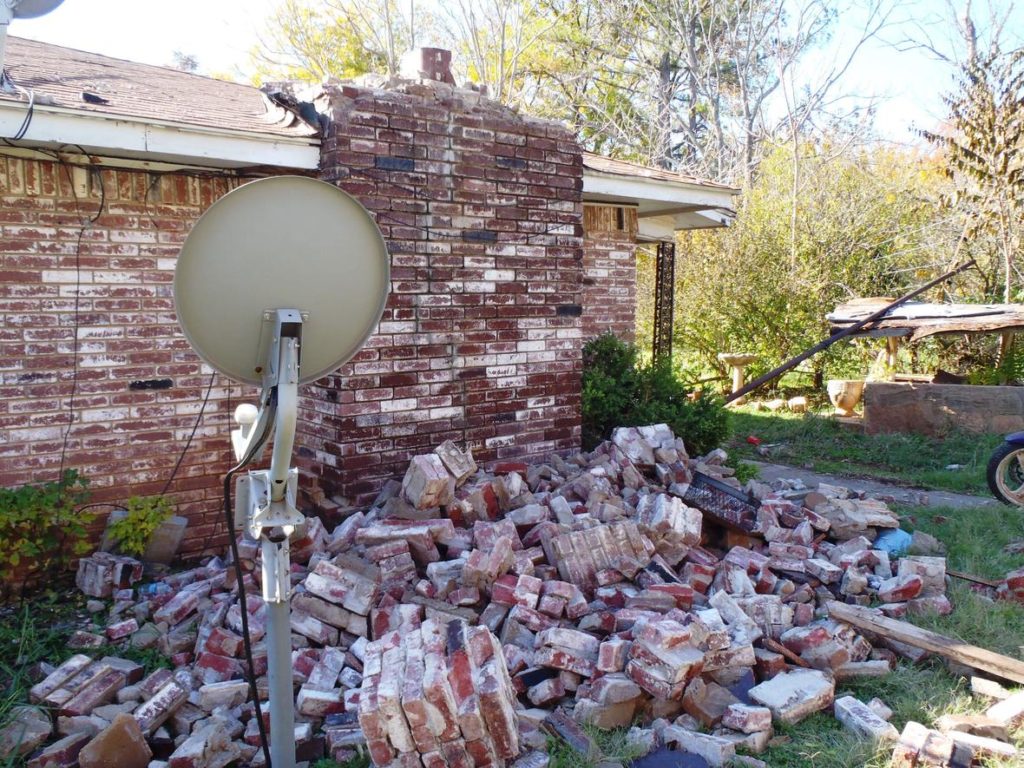New Mexico is taking positive steps to limit the number of “human caused” seismic events, commonly known as earthquakes, that occur in Lea and Eddy counties, as well as in other southeast areas of the state.
In general, earthquakes are a natural process that allows the earth to release tension and pressure that builds beneath the surface of the ground.
However, earthquakes have become more than a natural event created by the Earth alone. Humans are causing them as an unintended consequence of operations in the oil and gas industry. The increase in human caused seismic events increased considerably in the last decade.

Produced Water
Produced water is the industry term for a byproduct of oil exploration. It consists of a combination of flowback water created during hydraulic fracturing operations and subsurface water that is commonly brought up from underground formations at the same time that oil and natural gas is being produced.
Unfortunately, this “produced water” is briny and often contaminated with toxic chemicals, requiring safe disposal. The oil and gas industry addresses the problem by pumping this toxic waste back into subsurface formations, and such disposal has recently been linked to increased seismic events in the Permian Basin shared by southeast New Mexico and West Texas.
Energy and environment reporter Adrien Hedden in a recent Carlsbad Current-Argus article states that the growing threat of earthquakes in southeast New Mexico prompted state environmental officials to increase seismic monitoring and call on oil and gas operators to restrict the amount of produced water that is disposed of underground.
Risks of a Seismic Event
Although in their own right, earthquakes are naturally occurring events, human interaction is causing them in areas normally considered geologically stable, where very little seismic activity is the norm.
Injecting fluids underground can and does induce earthquakes. This fact was established decades ago by the US Geological Survey (USGS) scientists. The process of injecting liquids underground increases the fluid pressure within fault zones, essentially loosening the fault zones and making them more likely to fail causing an earthquake. When injected with fluids, even very stable faults which have not moved in historical times can be made to slip and cause earthquakes.
Aside from surface damage, one of the greatest risks from these seismic events is the potential of contaminating groundwater. Such contamination is a significant issue for areas like Lea County that rely on groundwater for potable water and agriculture.

Dealing with Misinformation
Unfortunately, many myths and much false information are being circulated about human caused earthquakes. Most of this misinformation blames hydraulic fracturing on the problem. The USGS has been studying human caused earthquakes for decades and has discovered a number of facts about their causes.
The State of New Mexico in deciding to be proactive to limit seismic events in southeastern counties, including Lea and Eddy, has taken these USGS facts into account instead of falling prey to the misleading data that has been published by other sources.
Contrary to popular belief, fracking is not the leading cause of human induced earthquakes in North America, though it can directly and indirectly lead to earthquakes. Rather, produced water disposal is the primary cause of recent increases in earthquakes in the Permian Basin. This conclusion is drawn because wastewater disposal wells typically operate for longer durations and inject much more fluid into formations than does hydraulic fracturing, making them more likely to induce earthquakes.
Enhanced oil recovery injects fluid into rock layers where oil and gas have already been extracted and generally does not cause seismic events; however wastewater injection sometimes occurs in never-before-touched rocks. The result is often the raising of pressure levels far more than the enhancing of oil recovery. The result is the increased likelihood of human induced earthquakes.
According to the USGS, not all wastewater injection wells induce felt earthquakes. For the most part, if an injection well triggers an earthquake, the seismic activity usually cannot be felt. Many combined factors are needed for such earthquakes to be felt. “These include the injection rate and total volume injected; the presence of faults that are large enough to produce felt earthquakes; stresses that are large enough to produce earthquakes; and the presence of pathways for the fluid pressure to travel from the injection point to faults,” states the USGS.
Further the USGS points out that produced water is present at nearly every oil and gas well, not just wells that have experienced hydraulic fracturing. “Saltwater is found in nearly every oil and gas production well, regardless of whether the well has been hydraulically fractured,” says the USGS. The chemical content of the produced water being injected in disposal wells is highly variable depending upon location. In the Permian Basin, the produced water is generally a mix of saltwater and spent hydraulic fracturing fluid.
It also should be noted that induced seismic events can occur at considerable distances from injection wells and at different depths from the injection zone. Induced earthquakes have been documented at distances of more than 10 miles away from the injection point and at significantly greater depths than the injection point. Those felt in Eddy and Lea counties occurred some distance from the injection wells.
Finally the USGS says that wells that do not require surface pressure to inject the produced water can still induce seismic events. Documented evidence shows that “where engineers pour fluid down the well without added pressure at the wellhead” fluid pressure can still be increased within the formation and earthquakes can be induced. To date, this phenomenon has not been documented in the Permian Basin.
Current Precautions in New Mexico
Although the approaches taken by the states of New Mexico and Texas to curb human induced seismic events are different, New Mexico has taken a proactive approach. The plan recently rolled out by New Mexico’s Oil Conservation Division (OCD) requires extra review in certain areas before a permit for wastewater injection is granted. Additionally, increased reporting and monitoring will likely be required. If things continue to worsen, the state could limit how much wastewater is injected into disposal wells.
State officials say these protocols were developed after getting feedback from the oil and gas industry in partnership with New Mexico Tech. Director of the OCD Adrienne Sandoval said that New Mexico is trying to be proactive with what she describes as a “pragmatic approach”. In a recent statement she said, “While some of the biggest events have occurred over the state line in Texas, the time is now to ensure larger events do not occur in our part of the oil field.”
The new protocols call for reporting and monitoring when two magnitude 2.5 events occur within 30 days and within a 10-mile radius of one another. Within that reporting area, operators will be required to provide weekly reports on daily injection volumes and average daily surface pressurization. This information must be shared with the state when requested. If a single magnitude 3.0 event occurs, operators will be required to reduce their injection rates.
To specifically point out the magnitude of the problem that exists right here in Lea County, between March and September of this year in an area near the line that separates Lea and Eddy counties, seven earthquakes with magnitudes ranging from 2.5 to 4.0 were reported to the ODC. Of these seven earthquakes four were greater than a magnitude of 3.0. The OCD states that the department is working with operators near the epicenters of these events. In some of the cases, operators are voluntarily suspending their injection operations.


